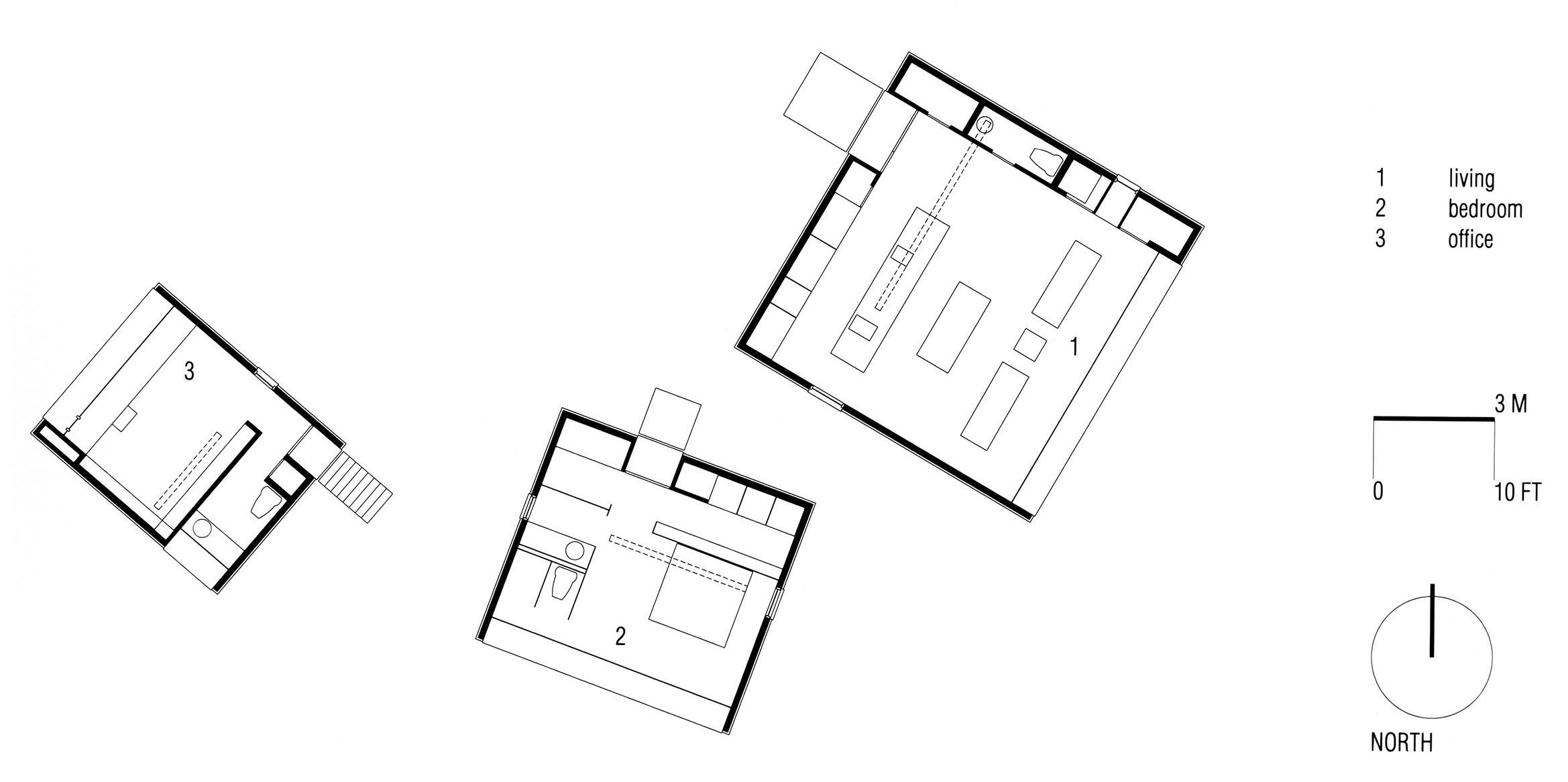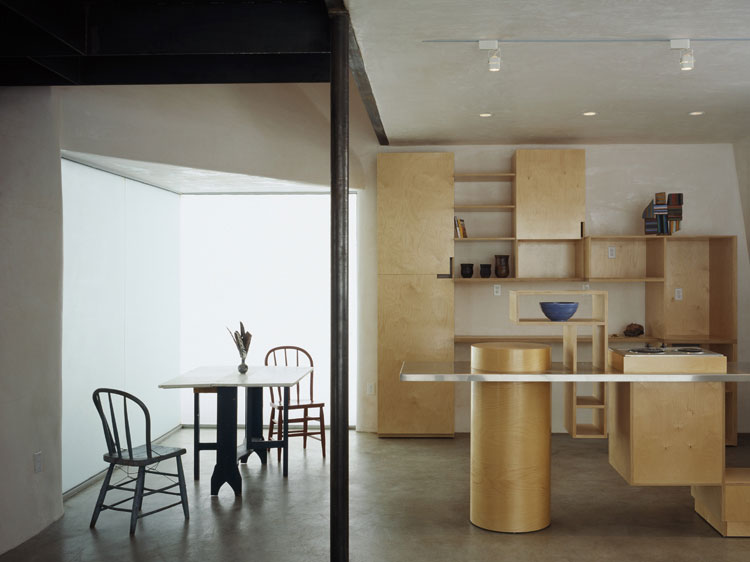
[Turbulence House by Steven Holl Architects]
There’s a curious movement that has been gaining momentum in the architectural world over the last decade and, whether you know it or not, you’ve probably witnessed some of the evidence. The examples are beautifully foreign, evoking visions of a sublime existence free from the monotony of everyday objects. There aren’t any dishrags upsetting the harmony in these environments, no electrical outlets cluttering the tranquility, and even the kitchen hood has been eliminated to maintain perfect visual cohesion. An antiquated collection of found objects, precariously arranged on a bookcase or coffee table, lends an esoteric narrative to the space. Bespoke handmade bowls escape a life of utility and, instead, grace the cabinetry as sculptures would a museum. Outside, the surrounding landscape is perpetually void of vehicles. In fact, there never even seems to be access to these sites (how the heck did the photographer get there and where did they park?). Gutters, downspouts and, for that matter, roof planes don’t have any business in this setting.



[Desert Nomad Cubes by Rick Joy Architects]
These are but a few common characteristics of installation art — defined as an artistic genre of three-dimensional works that are often site-specific and designed to transform the perception of a space. (Thanks, Wikipedia.) And there’s nothing wrong with that in and of itself. Art should have value whether it hangs on a wall or sits on a foundation. These works serve a specific clientele, they advance creativity in the world, and they provide artistic inspiration to the design-minded. All of which are attributes we admire and seek out for ourselves and our community.


[House II by Peter Eisenman Architects]
The trouble occurs when we start referring to installation art as houses. When we lump them in the same category with houses for living, things get messy. Evaluated as dwelling, the art is often criticized for its lack of practicality and, well, livability. On the flip side, houses for living that are measured against these curated examples always fall short of an unattainable stylized purity. We’re not suggesting that either paradigm is better or worse, right or wrong, but simply that they are fundamentally different in nature from one another.



[Turbulence House by Steven Holl Architects]
What becomes important here is creating a distinction. Pure art is not intended to be lived in (granted, you could conceivably spend a few days in these installations, but it would be on par with spending the night at MOMA). Likewise, true houses don’t aspire to be gallery pieces, they have different goals (like livability, for instance). Intermingling the two is harmful to architecture and art alike.
As designers and builders of houses for living, we’re proposing that this distinction provides a healthy break. Art installations can be evaluated as thought-provoking pieces to dreamily look upon and temporarily indulge in inhabiting. And houses for living can be measured as functional, beautiful dwelling spaces for a lifetime. It’s our intent to provide a different filter in which to view this situation. With any luck it simplifies the equation and sidesteps the misunderstandings so common between the two. Both types of built work ought to be appreciated for the specific experience they aim to offer.
Cheers from Team BUILD





